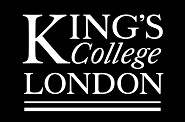A research project begins with an idea which is then transformed into a research question. Many questions for research that can lead to patient benefit arise from observations made by health professionals in the NHS. These include potential clinical innovations and improved methods for organising and delivering service.
A research question is a clear, focused and concise statement that conveys the objectives of the research and its potential findings. It determines the success of a research process and should drive the development of a research protocol. A research question should be expressed in a simple, straight-forward language.
There are various sources of research ideas that can generate research questions such as clinical practice, the scientific literature, conversations with peers or quality improvement activities. In order to develop and refine research ideas, an array of useful techniques such as mind mapping, brainstorming or focus groups are available.
PICOT format
A very helpful approach to transforming a research idea into a research question is the PICOT format [1]. It serves as a mnemonic for population, intervention, comparison, outcome and timeframe
P – Population refers to the sample of participants that will be recruited for the study. It is important to specify the characteristics of the eligible participants such as age, gender, ethnicity, social class, disease(s), the recruitment setting etc. This involves also specifying who would be excluded (e.g. patients with certain conditions).
I – Intervention refers to the treatment or activity that will be provided to the participants in the study. You should think about dose, duration, frequency, intensity, timing, route, the administrator of the intervention etc. In some studies, intervention may be replaced by a disease or physical state, or accessibility or organisational problem.
C – Comparison stands for the reference you plan to compare with the treatment. If there is an existing ‘gold standard’ treatment, you should aim to use it as a comparison. A comparison can be inactive or active, placebo, no treatment, usual care, a different variant of the same intervention, an alternative intervention etc.
O – Outcome refers to what will be measured to assess the effectiveness of the intervention. It is important to think about the type of the outcome (e.g. showing benefit or harm, clinical events or patient reported outcomes, dichotomous or continuous etc…), how the outcomes will be measured, when they will be measured etc…
T – Time frame refers to the interval of measurement of the duration of the study. Researchers should think about how time, frequency of measurements and duration of the study can affect the validity, relevance and applicability of the findings [2].
What, how and why questions
Another useful approach to developing a research question is by using the following questions:
- What is this research trying to find out? This question serves to determine the aims and rationale behind the research.
- How will the research answer your research question? This question is focused on determining the most appropriate research design and method to answer the research question.
- Why is this research question worth answering? This question aims to provide justification for research given that it requires investment of time, energy, money and other resources [3]
FINER criteria
The characteristics of a good research question are captured by the FINER acronym which stands for feasible, interesting, novel, ethical, relevant research question [4].
Feasibility of the study encompasses the practical aspects of performing research. It is essential to consider the feasibility of every research project to obtain a clear idea on how the project will be performed. It is important to determine if the question can be answered in a specific environment and in a reasonable, pre-specified time frame. Researchers should consider what is needed in terms of facilities, equipment, skills and training to perform the study. Thinking about these issues helps to clarify what additional support is necessary and where it can be obtained.
To demonstrate that a research question is interesting, it is necessary to explain why it is important, that it matters e.g. to patient outcomes and what will be the subsequent benefit. Researchers should present the magnitude, severity and the burden of the problem they want to address or potential impact on service or population and demonstrate that the research is needed based on the gap in the knowledge and evidence.
To ensure that the research question is novel and has not already been investigated, it is necessary to perform a literature review. For further guidance please read Systematic reviews in support of primary research applications in Resources section of this website. A literature review may also help in improving the research question and deciding on the best methodology. Research projects should produce new information. However, occasionally, research studies may also be replicated when their findings are unreliable due to flaws in their design, analysis.
There is a need to ensure that the research study will be ethical. It is important to consider issues such as informed consent, privacy, confidentiality and anonymity, ownership of data and conclusion, use and misuse of results etc. Researchers should also think about minimising discomfort to the patients and protecting limited resources. The specific ethical issues related to groups of patients such as children or adults with dementia should also be taken into account. Researchers should also try to determine potential reasons that could lead to withdrawal of participants from the intervention studies and how the adverse effects will be recorded.
Another important step is to demonstrate the relevance of the research question. The applied health research, which is eligible for NIHR funding, must contribute to improved health care practice and provide clear patients benefits.
Finally, it should be noted that RDS London advisers will gladly provide support in formulating research questions as well as with other aspects of preparing grant applications.
Dr Lorainne Tudor Car
Research Design Service London
References:
- Guyatt GH, Oxman AD, Kunz R, et al. GRADE guidelines
- Framing the question and deciding on important outcomes. Journal of Clinical Epidemiology 2011;64(4):395-400 doi: 10.1016/j.jclinepi.2010.09.012[published Online First: Epub Date]|.
- Riva JJ, Malik KM, Burnie SJ, Endicott AR, Busse JW. What is your research question? An introduction to the PICOT format for clinicians. The Journal of the Canadian Chiropractic Association 2012;56(3):167-71
- Punch KF. Developing Effective Research Proposals. London: SAGE Publications, 2004.
- Cummings SRB, W.S. Hulley, S.B. Conceiving the research question. In: Hulley SBC, S.R., ed. Designing Clinical Research. Baltimore: Williams & Wilkins, 1988:12-7.
Other resources
- Centre for Evidence-based Medicine offers a set of tools that can help you develop your research question
- Clinical Research Network is a source of support and advice on the practical aspects of delivering your study in the NHS environment such as feasibility of your study
- MRC and Health Research Authority created a decision tool to help you decide what approvals your study may need. You can view it as the Health Research Authority website.
- MRC and Health Reserach Authority created an ethics website to determine if you need NHS Research Ethics Committee (REC) approval
- Integrated Research Application System (IRAS) is a single system for applying for the permissions and approvals for health and social care research in the UK.
When conducting a research study, it is important to follow research governance and good clinical practice guidelines. The below websites are a good place to start.
- The Department of Health and Social Care
- NHS R&D Forum and Primary Care Working Group
- General Medical Council provides guidance on good clinical practice in research
- MRC guidelines for good clinical practice in clinical trials.
Research database and current evidence links
- National Institute for Health and Care Excellence – search this database for any guidance, published or in development
- Access to a suite of databases containing high quality authoritative evidence and best practice.
- The Cochrane Library – six databases containing different types of high-quality, independent evidence to inform healthcare decision-making. These include a database of Cochrane systematic reviews and central register of controlled trials.
- PROSPERO register – database of prospectively registered systematic reviews in health and social care.
Registers of clinical trials
Allows users search, register and share information about randomised controlled trials.
- ISRCTN registry is a primary clinical trial registry recognised by WHO and ICMJE that accepts all clinical research studies (whether proposed, ongoing or completed), providing content validation and curation and the unique identification number necessary for publication. All study records in the database are freely accessible and searchable.
- ClinicalTrials.gov is database of privately and publicly funded clinical studies conducted around the world.
- EU Clinical Trials Register – www.clinicaltrialsregister.eu




